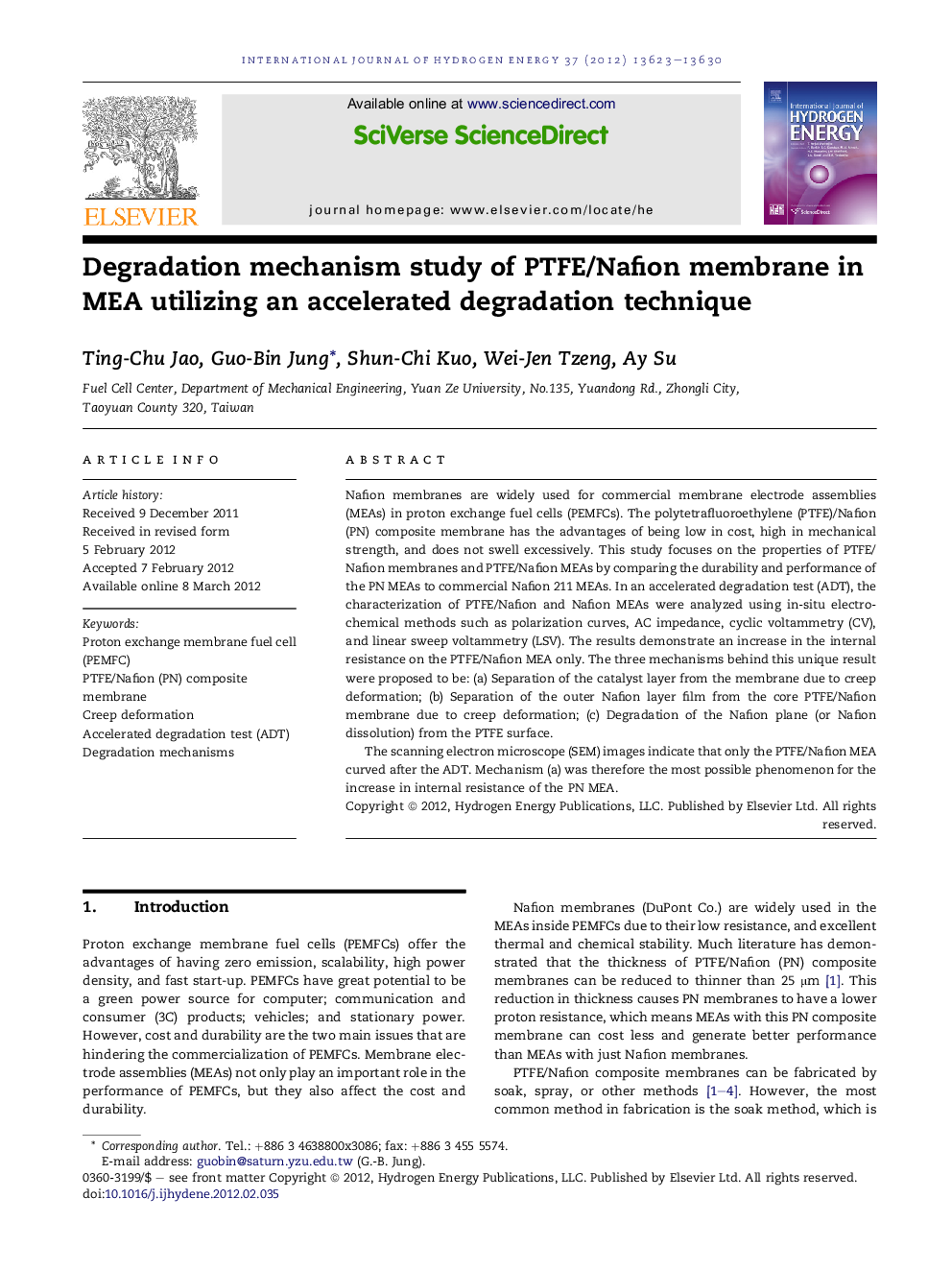| Article ID | Journal | Published Year | Pages | File Type |
|---|---|---|---|---|
| 1282262 | International Journal of Hydrogen Energy | 2012 | 8 Pages |
Nafion membranes are widely used for commercial membrane electrode assemblies (MEAs) in proton exchange fuel cells (PEMFCs). The polytetrafluoroethylene (PTFE)/Nafion (PN) composite membrane has the advantages of being low in cost, high in mechanical strength, and does not swell excessively. This study focuses on the properties of PTFE/Nafion membranes and PTFE/Nafion MEAs by comparing the durability and performance of the PN MEAs to commercial Nafion 211 MEAs. In an accelerated degradation test (ADT), the characterization of PTFE/Nafion and Nafion MEAs were analyzed using in-situ electrochemical methods such as polarization curves, AC impedance, cyclic voltammetry (CV), and linear sweep voltammetry (LSV). The results demonstrate an increase in the internal resistance on the PTFE/Nafion MEA only. The three mechanisms behind this unique result were proposed to be: (a) Separation of the catalyst layer from the membrane due to creep deformation; (b) Separation of the outer Nafion layer film from the core PTFE/Nafion membrane due to creep deformation; (c) Degradation of the Nafion plane (or Nafion dissolution) from the PTFE surface.The scanning electron microscope (SEM) images indicate that only the PTFE/Nafion MEA curved after the ADT. Mechanism (a) was therefore the most possible phenomenon for the increase in internal resistance of the PN MEA.
► MEA performance with PN is lower than with N211 due to lower conductivity of PTFE. ► PN membrane is more durable and safer than Nafion after become ruptured. ► Creep deformation of PN membrane leads to Rohm increase and lower MEA durability.
